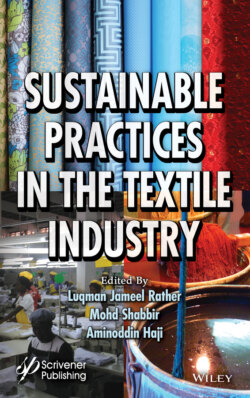Читать книгу Sustainable Practices in the Textile Industry - Группа авторов - Страница 13
1
Extraction and Application of Natural Dyes
ОглавлениеSanjeeda Iqbal and Taiyaba Nimra Ansari*
Department of Botany, Govt. Holkar Science College, Indore, India
Abstract
Environmental pollution and population explosion are becoming the world’s biggest issues. Eco friendly products and practices are popularizing day by day due to present national and international awareness on environmental situations. Textile industries are one of the reasons of environmental pollution and affect all forms of life adversely. Textile dyeing process generally uses chemical dyes and synthetic mordants. Chemicals in the dyeing process began with the discovery of “Mauve” by WH Perkin in 1856. These synthetic dyes are manufactured from coal tar, petrochemicals and many other chemicals, which cause allergies such as contact dermatitis, respiratory diseases, skin irritation and cancer etc. Naturally dyed textile materials are in demand globally because of harmful effects of chemical dyeing and continuous efforts of researchers in this field. Natural dyes can be obtained from natural resources like plants, minerals, insects and fungi but most of the dyes are taken from plant parts i.e. leaves, barks, flowers, fruits and roots. Natural dyes have some special properties like soothing color, biodegradable, non-hazardous, non-carcinogenic and antimicrobial resistance etc. Natural dye extraction process requires plant parts and sometimes their by-products as a raw material. Natural dyeing practices enhance the cultivation of flowering crops, which provides an extra source of income to farmers. Thus, large scale production of naturally dyed fabric in future will solve the problem of human as well as environmental health.
Keywords: Natural dyes, source, fiber, mordant, dyeing, fastness, antibacterial, UV-protection
